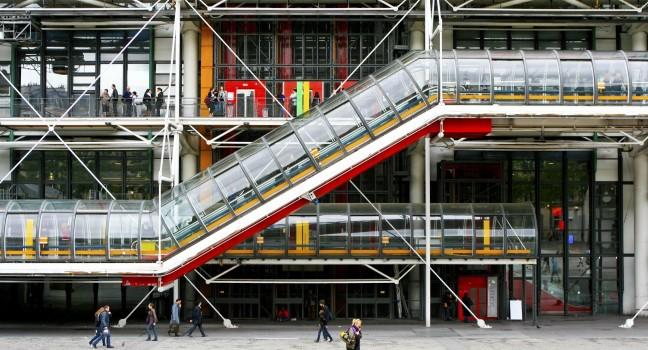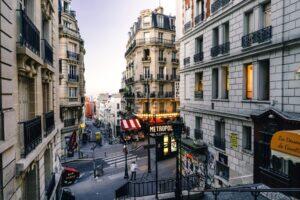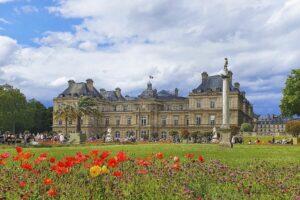Fodor's Expert Review Centre Pompidou

Love it or hate it, the Pompidou is certainly a unique-looking building, and it holds some of the city's best contemporary art, from the 20th century to the present day. Most Parisians have warmed to the industrial, Lego-like exterior that caused a scandal when it opened in 1977. Named after French president Georges Pompidou (1911–74), it was designed by then-unknown architects Renzo Piano and Richard Rogers, who put the building's guts on the outside and color-coded them: water pipes are green, air ducts are blue, electrics are yellow, and things like elevators and escalators are red.
The Musée National d'Art Moderne (Modern Art Museum, entrance on Level 4) occupies the top two levels. Level 5 is devoted to modern art from 1905 to 1960, including major works by Matisse, Modigliani, Marcel Duchamp, and Picasso. Level 4 is dedicated to contemporary art from the '60s on, including video installations. The Galerie d'Enfants (Children's Gallery) on the mezzanine level has interactive... READ MORE
Love it or hate it, the Pompidou is certainly a unique-looking building, and it holds some of the city's best contemporary art, from the 20th century to the present day. Most Parisians have warmed to the industrial, Lego-like exterior that caused a scandal when it opened in 1977. Named after French president Georges Pompidou (1911–74), it was designed by then-unknown architects Renzo Piano and Richard Rogers, who put the building's guts on the outside and color-coded them: water pipes are green, air ducts are blue, electrics are yellow, and things like elevators and escalators are red.
The Musée National d'Art Moderne (Modern Art Museum, entrance on Level 4) occupies the top two levels. Level 5 is devoted to modern art from 1905 to 1960, including major works by Matisse, Modigliani, Marcel Duchamp, and Picasso. Level 4 is dedicated to contemporary art from the '60s on, including video installations. The Galerie d'Enfants (Children's Gallery) on the mezzanine level has interactive exhibits designed to keep the kids busy. Outside, next to the museum's sloping plaza—where throngs of teenagers hang out (and where there's free Wi-Fi)—is the Atelier Brancusi. This small, airy museum contains four rooms reconstituting Brancusi's Montparnasse studios with works from all periods of his career. On the opposite side, in Place Igor-Stravinsky, is the Stravinsky fountain, which has 16 gyrating mechanical figures in primary colors, including a giant pair of ruby red lips. On the opposite side of Rue Rambuteau, on the wall at the corner of Rue Clairvaux and Passage Brantôme, is the appealingly bizarre, mechanical, brass-and-steel clock, Le Défenseur du Temps.
The Pompidou's permanent collection takes up very little of the massive building, which also contains temporary exhibition galleries, including a special wing for design and architecture; the free, highly regarded reference library (university students often line up on Rue Renard to get in); and the basement, with its two cinemas, theater, dance venue, and a small, free exhibition space. On your way up the escalator, you'll have spectacular views of Paris, ranging from Tour Montparnasse to the left, around to the hilltop Sacré-Coeur on the right.
READ LESS








